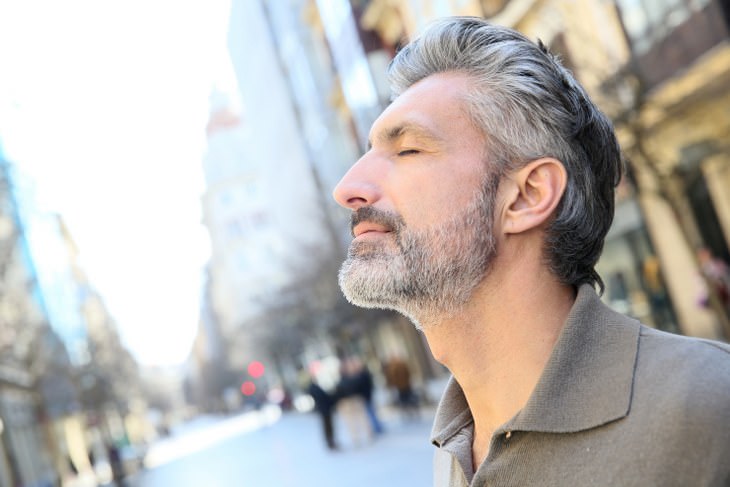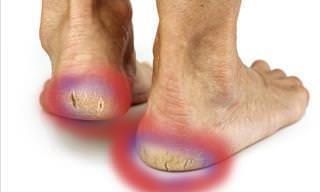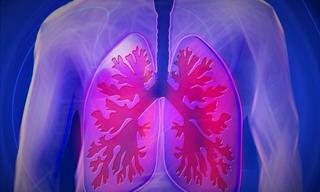
1. You breathe through your mouth
Not only can mouth breathing be annoying to those around you, but it may also be harmful, as breathing through the mouth deprives your body of the immunity-boosting and blood flow-regulating nitric oxide that your nasal passages provide. According to dentist Steven Lin, “In adults, mouth breathing… can progress to obstructive sleep apnea, a condition linked to heart failure, high blood pressure, and Alzheimer’s disease. In humans, [mouth breathing] is really just a survival mechanism, to be used when the nasal breathing is impossible.”
2. You hold your breath when you run
“Runners tend to focus on form first and breathing second, if at all,” says Joe LoCascio, a running expert and performance coach. However, this is a very bad habit since the reduced amount of oxygen can impede your physical progress. “Improving your physiology and learning how to breathe while running is especially important for athletes who want to boost their performance, but it’s also critical for entry-level runners who just want to make it around the block without feeling gassed,” says LoCascio.

3. You’re sucking in your gut
“In an effort to look skinny we often, even unconsciously, suck in our guts regularly,” says Caleb Backe, a health and wellness expert and personal trainer and for Maple Holistics. “When we do this, we are not allowing our body to breathe to its full capacity as we limit our diaphragm’s range of motion. This means that weak exhalation actually doesn’t release all the carbon dioxide from our lungs.”
4. You're trying to breathe while hunched over a keyboard all day long
“Poor posture affects good breathing techniques,” says Elizabeth Kovar, MA, a health and fitness expert from the American Council on Exercise. “Good posture is necessary for breath management, volume, and resonance. Poor posture, especially when seated, compresses the thoracic region and does not allow the diaphragm to open fully when breathing.”

5. Your breathing is not deep enough
“Many people do not breathe deeply enough,” says Dr. Chirag Shah, M.D., a medical reviewer and board-certified emergency medicine physician for PollMed. “Proper breathing involves pulling air all the way into the depths of your lungs and pushing your diaphragm down in the process. This improves the amount of blood that returns to your chest and helps detoxify the body.”
6. You rely on mouth breathing while you exercise
No matter how hard you push yourself during a workout session, your progress will be severely limited if you aren't breathing appropriately. According to breathing expert Tara Clancy, while mouth breathing "we are taking in too much oxygen, which throws off the ratio of oxygen and carbon dioxide in our blood and sets us up for a host of problems, including nasal congestion.” She recommends that you “push yourself only so hard as to be able to continue to breathe through your nose” to avoid any damaging mouth breathing.

7. You’re breathing too much
It might sound weird, but it is actually possible to breathe too much, and it is not always easy to detect. “It doesn’t always look like hyperventilation, but you’re in this state where you’re blowing off too much carbon dioxide and sucking in too much oxygen, and you’re not even realizing it,” says Patricia Ladis, a certified behavioral breathing expert and physiotherapist. To fix this issue, experts recommend practicing taking quiet breaths through your nose for a few minutes, before working on taking calmer and deeper breaths throughout the day.
8. You’re belly breathing
“Over half of the new students who come to my yoga class are shallow breathers when they first arrive, sucking their gut in when they inhale,” says Kim McIntyre, a yoga instructor and the CEO of Joyful Being Transformations. “This only allows air to flow into the upper part of the chest and mimics the type of breathing we do when we feel stressed and anxious.” To work out if you're a belly breather, place your hand on your stomach while you are breathing. If your stomach expands when you breathe, then you’re using your stomach, and have nothing to worry about. If, on the other hand, your chest rises, then you are a chest breather and will need to focus on changing this.
 Go to BabaMail
Go to BabaMail




























